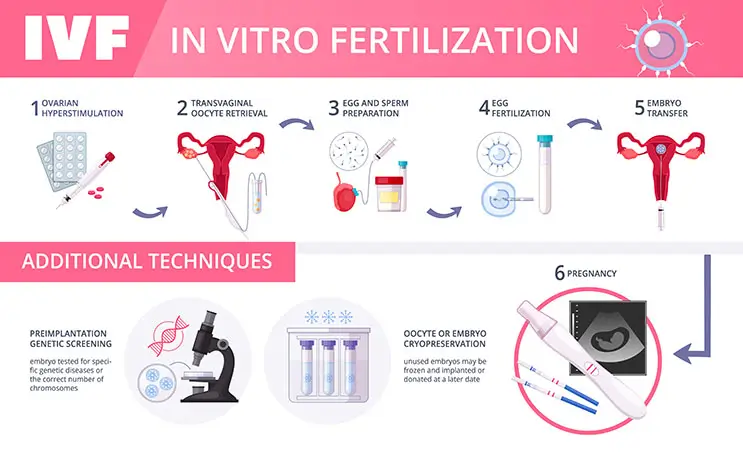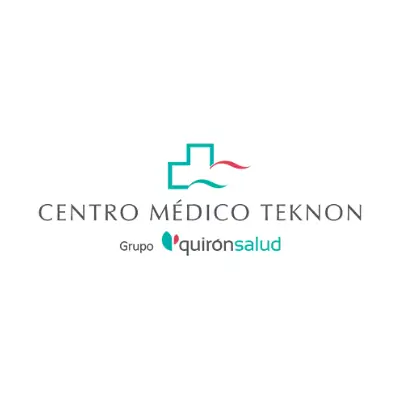Modern Fertility Treatment: Getting Pregnant in the 21st Century

In modern times, lifestyle choices and their associated health impacts have led to a concerning rise in infertility issues.
Many are choosing to put off pregnancy until they have reached a more stable point in their lives. And many women plan to get pregnant after they have finished their education, achieved career goals, or traveled the world. The challenge is, by that time, ovarian reserves might have depleted.
Luckily, 21st-century fertility preservation techniques, including vitrification, preimplantation genetic testing, and freeze-all strategy, are now available for women who want to delay getting pregnant.
What are the New Trends in Fertility Treatment?
Over the past 10 years, assisted reproductive technologies have witnessed significant advancements. New fertility treatments have drastically increased pregnancy rates in women seeking assisted fertility, with success rates reaching 90% with some advanced techniques.
Worldwide, top hospitals, specialized clinics, and fertility centers offer cutting edge technologies in infertility treatment, including:
Vitrification
Embryos and eggs can now be cryopreserved with an extremely fast freezing method called vitrification. Consequently, they can be efficiently preserved in glass-like structures for years.
In recent years, vitrification has gained popularity among women seeking medical help to get pregnant. Vitrification offers numerous advantages, such as:
- Pregnancy rates have doubled using vitrification than the older slow freezing method.
- When the embryo is well preserved in a frozen state, it enables genetic testing before implantation (preimplantation genetic test).
- Using embryos preserved with vitrification technology gives almost the same results as fresh embryos.
- Avoids ovarian hyperstimulation syndrome (OHSS) that can occur in women receiving fertility treatments.
- Allows cancer patients to protect their fertility by cryopreserving oocyte/embryo.
- Vitrification is an efficient method for young women who want social egg freezing.

Preimplantation Genetic Testing (PGT)
Recently many women have been trying to get pregnant at an older age. Around 80% of the women who visit our fertility center are over 38 years old.
Safe preimplantation genetic testing (PGT) provides women the best chance of having a healthy baby through IVF. PGT offers patients:
- Improved pregnancy rates: Preimplantation genetic testing helps choose a genetically healthy embryo for transfer. That way, the risk of having a failed embryo transfer or a miscarriage is significantly reduced.
- Decreased risk of multiple pregnancies: Multiple pregnancy rates have gone down dramatically thanks to genetic testing in embryos before transfer.
Some patients are concerned that preimplantation genetic testing will harm or alter the embryo. In reality, there are no such dangers. Instead, PGT helps fertility specialists guarantee the transfer of a healthy embryo and increases your chances of getting pregnant.
Freeze-all strategy
The freeze-all approach combines vitrification, IVF, and preimplantation genetic testing and has consistently grown in demand since 2014.
In the freeze-all strategy, all the healthy embryos are frozen using vitrification technology to be implanted in the uterus in future cycles. Then, when you are ready, you can use your frozen fertilized follicles to resume your IVF treatment. By doing so, patients can:
- Avoid the risk of hyperstimulation: The ovaries can sometimes overreact to fertility drugs and hormones. Ovarian hyperstimulation syndrome (OHSS) can sometimes occur after repetitive IVF cycles. As a result, the ovaries can swell and become painful. Freezing the embryos allows you to take a break from fertility treatment when required, reducing the hormonal stress on your ovaries and, consequently, the risk of ovarian hyperstimulation syndrome.
- Plan the perfect timing for implantation: If your hormone levels are off, your doctor needs to correct them before transferring the embryo to increase the chance of successful pregnancy. When the embryos are frozen, your doctor has enough time to correct your hormone levels before embryo transfer.
Can You Predict The Chances of Getting Pregnant With IVF?
Specialized embryologists and fertility doctors can accurately assess how successful assisted reproduction treatment is for each patient. To do this, the care team uses 3 measurements to predict how your body would respond to fertility treatment:
- Age: Women aged 38 years and older are less likely to respond to treatment.
- Anti-Mullerian hormone (AMH) levels: AMH levels can give your doctor an idea of how much egg supply you have left. Your egg reserve is likely to be reduced if your AMH levels are low. As a result, reduced AMH levels may indicate that your chances of becoming pregnant are diminishing.
- Antral follicle count: During an antral follicle count, your doctor counts the number of egg-holding follicles in each of your ovaries. Together with your AMH levels, the antral follicle count can help your fertility doctor determine how many viable eggs you have left. The lower your antral follicle and AMH levels are, the less likely IVF treatment will work for you.
Using your age, AMH levels, and antral follicle count, specialized fertility experts will choose the best IVF treatment with the highest odds of getting pregnant.
How Do You Measure Success in IVF?
A successful IVF journey depends on:
- How quickly pregnancy can be achieved
- How many eggs can be harvested through each cycle (the more the eggs, the higher the chances of pregnancy)
- Patient safety (collect as many eggs as possible without compromising the patient’s health)
Each patient's experience in assisted pregnancy is unique, with customized fertility treatment using advanced embryo culture technology enabling the highest chance of pregnancy at the lowest possible cost.
How Can You Improve Your Chances of Getting Pregnant?
Choosing a fertility care team utilizing the best modern fertility approaches would significantly increase the chances of conceiving. Top fertility centers offer excellent odds of getting pregnant because:
- You will be treated by the top fertility specialists and embryologists
- You will undergo an extensive examination by a multidisciplinary team
- The center is equipped with a state-of-the-art IVF lab
- Your embryo will be monitored continuously using the latest technologies in biomedicine
Modern fertilization trends like vitrification, PGT, and embryo freezing will only work if the fertility facility has superior lab technology and an excellent team of gynecologists, embryologists, and fertility specialists. So, if you are considering assisted reproduction, choose your preferred facility and fertility care team wisely.

Dr. Ramón Aurell is a renowned gynecologist with expertise in Assisted Reproduction and Family Medicine. With extensive training in London as a reproductive medicine researcher, Dr. Ramón Aurell has been a full member of the European Society of Human Reproduction and Embryology (ESHRE) since 1999, the American Society for Reproductive Medicine (ASRM), and the Spanish Society of Gynecology and Obstetrics (SEGO) since 2000. During his career, he has authored over 250 publications.

Teknon’s fertility center in Barcelona, Spain is one of the top fertility centers in Europe and the world. Led by Dr. Ramon Aurell, our center offers the full spectrum of modern fertility treatments including insemination, IVF, and fertility preservation. Dr. Aurell is a leading figure in assisted fertility. Together with his team, he gives couples and single women their best shot at parenthood.
For more details, please visit https://www.quironsalud-hospitals.com/
Sources:
Featured Blogs



